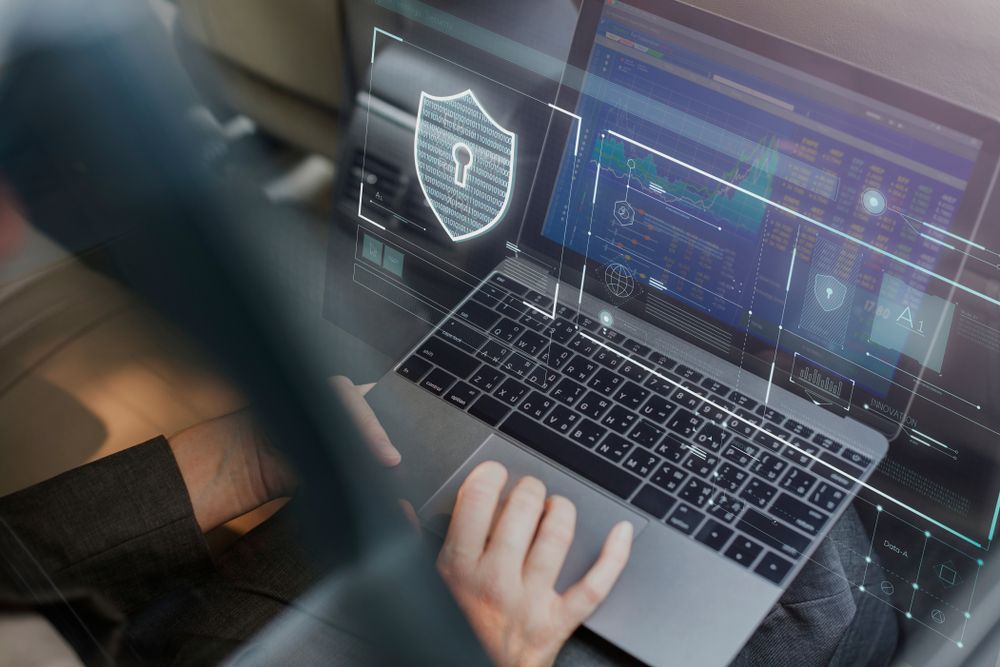
Welcome to an insightful exploration of the financial world’s vigilant guardian – banking security. As we navigate through the intricacies of protecting customers’ financial information, we will uncover the remarkable journey of security evolution within the banking sector. Financial institutions have long stood as bastions of trust, safeguarding the monetary assets of individuals and businesses alike. As technology advances and threats become more sophisticated, so too do the measures designed to fend off those who wish to do harm. Join us as we delve into the past, present, and future of banking security, and discover how it continues to evolve to protect the financial sanctity of customers around the globe.
The Dawn of Banking Security
In the early days of banking, security measures were primarily physical. Bank vaults with thick steel walls, time-locked safes, and vigilant guards were the norm. The introduction of paper checks saw the first wave of non-physical security, with signatures and check numbers used to authenticate transactions. However, as the banking industry entered the electronic age, a new era of security measures emerged.
Banks began to utilize mainframe computers, which required a new kind of protection – electronic security. Passwords and PINs (Personal Identification Numbers) became the keys to accessing one’s financial data. These early forms of electronic security were rudimentary by today’s standards, but they laid the groundwork for the complex systems we now depend on to keep our financial information safe.
The Rise of Digital Banking and Online Security
With the advent of the internet, banking underwent a transformative change. Online banking brought with it convenience and efficiency, but also new vulnerabilities. Cybersecurity became a critical concern, leading to the development of encryption technologies to safeguard data transmitted over the web.
SSL (Secure Sockets Layer) encryption quickly became a standard for secure communication between banks and their customers. Multi-factor authentication, which requires more than one method of verification, was implemented to add an additional layer of security. Banks also began using sophisticated monitoring systems to detect and respond to suspicious activities in real time.
The Shift to Mobile Banking and App Security
As smartphones became ubiquitous, banking apps offered customers the freedom to manage their finances on the go. This convenience, however, introduced new security challenges. To tackle these, banks employed app-specific security measures, such as biometric authentication (fingerprint and facial recognition), secure APIs, and tokenization to protect sensitive information.
The security of mobile banking apps is continually being enhanced. Banks now use a combination of device profiling, geolocation tracking, and behavior analysis to detect and prevent fraudulent activities. The encrypted data storage on devices and the ability to remotely wipe a phone’s data if it is lost or stolen are additional safeguards that banks have implemented to protect customers’ financial information in the mobile banking era.
The Integration of Artificial Intelligence in Fraud Detection
Artificial Intelligence (AI) and machine learning have revolutionized the way banks detect and prevent fraud. AI systems can analyze vast amounts of transaction data to identify patterns and anomalies that may indicate fraudulent behavior. Machine learning algorithms improve over time, constantly enhancing their ability to spot potential threats.
AI-driven chatbots and virtual assistants also contribute to security by offering secure and efficient customer service options. These technologies can quickly verify a customer’s identity and assist with routine banking tasks, reducing the risk of human error and exposure to social engineering tactics used by fraudsters.
The Future of Banking Security: Blockchain and Beyond
The future of banking security is being shaped by emerging technologies like blockchain. With its decentralized and transparent nature, blockchain has the potential to significantly reduce fraud and errors. Smart contracts and distributed ledgers can provide a nearly tamper-proof system for recording transactions and identity management.
In addition to blockchain, other technologies on the horizon, such as quantum computing and advanced biometrics, promise to further enhance banking security. Quantum-resistant encryption methods are being explored to prepare for the day when quantum computers could potentially break current encryption algorithms.
As we look to the future, one thing is clear: the evolution of banking security measures is an ongoing pursuit. Banks must remain vigilant, proactive, and innovative to protect customers’ financial information in an ever-changing threat landscape.
The banking industry has come a long way from the simple locks and keys of the past. In our journey through the evolution of security measures, we’ve seen how banks have adapted to each technological advancement and threat with resilience and ingenuity. The future holds exciting possibilities for even more secure and efficient banking, and customers can rest assured that their financial information is more protected today than ever before. As we continue to witness the evolution of security measures in banking, we can be confident that the industry will rise to meet any challenge with the steadfast commitment to safeguarding the financial assets and information of its customers.
